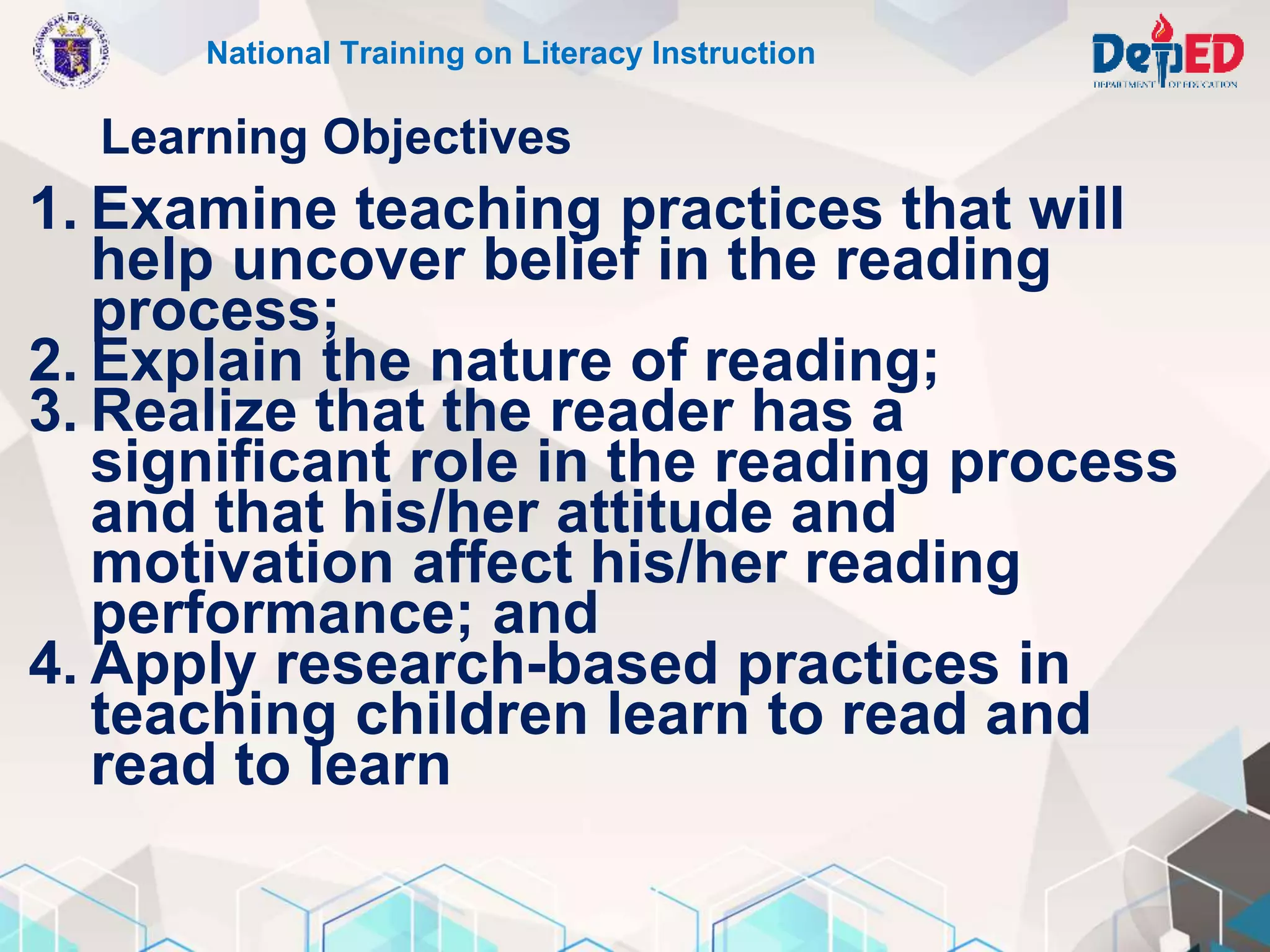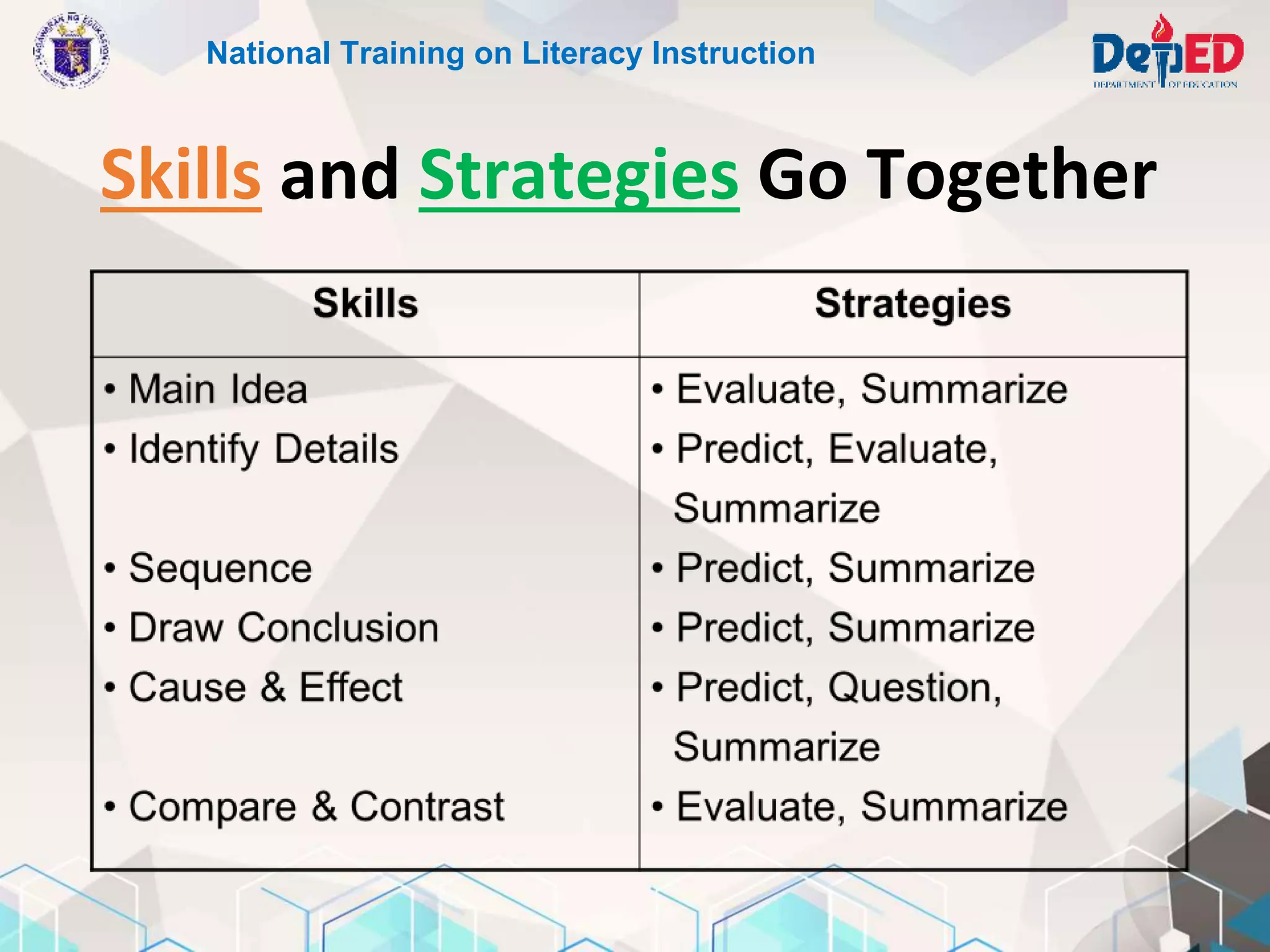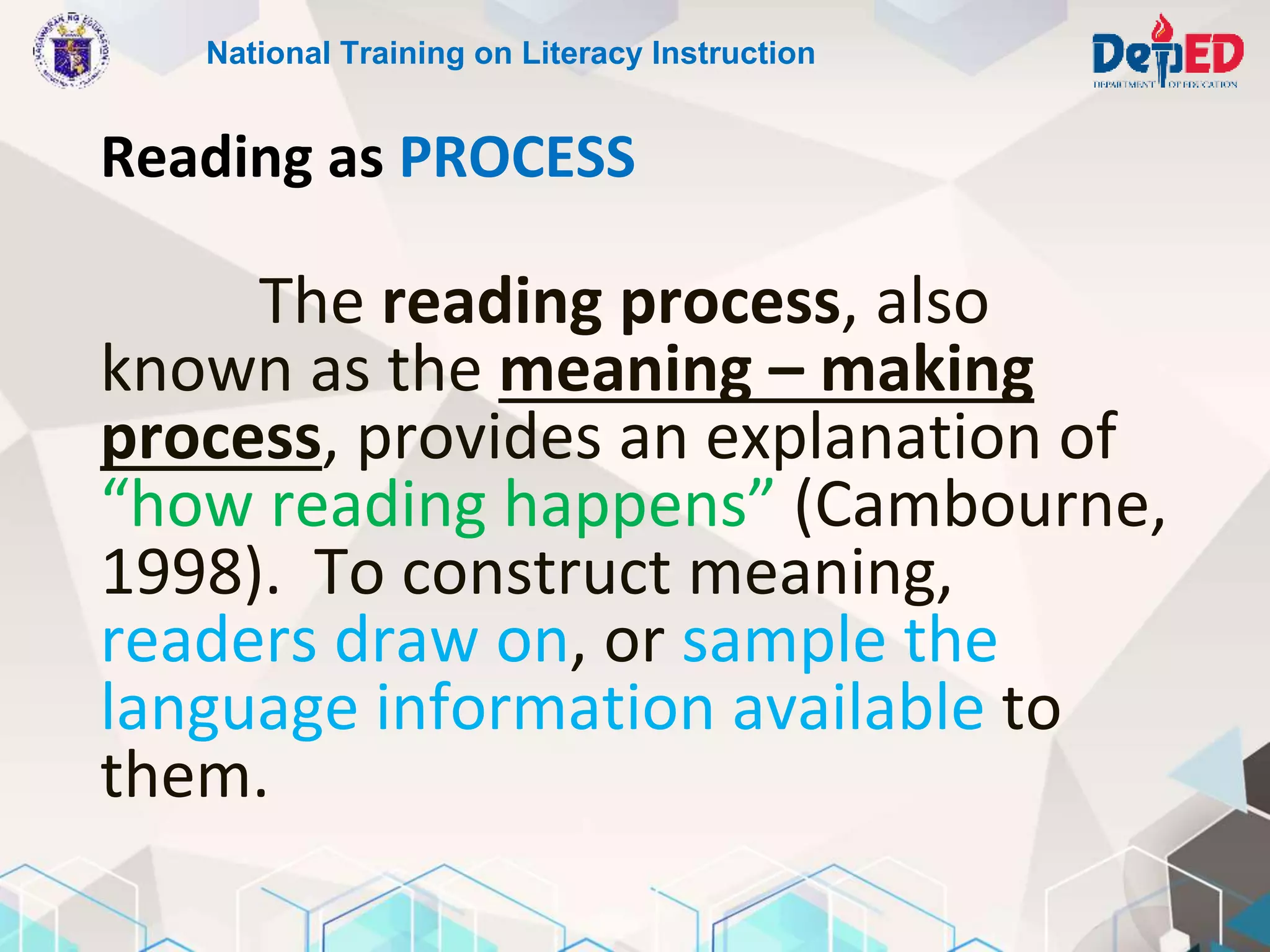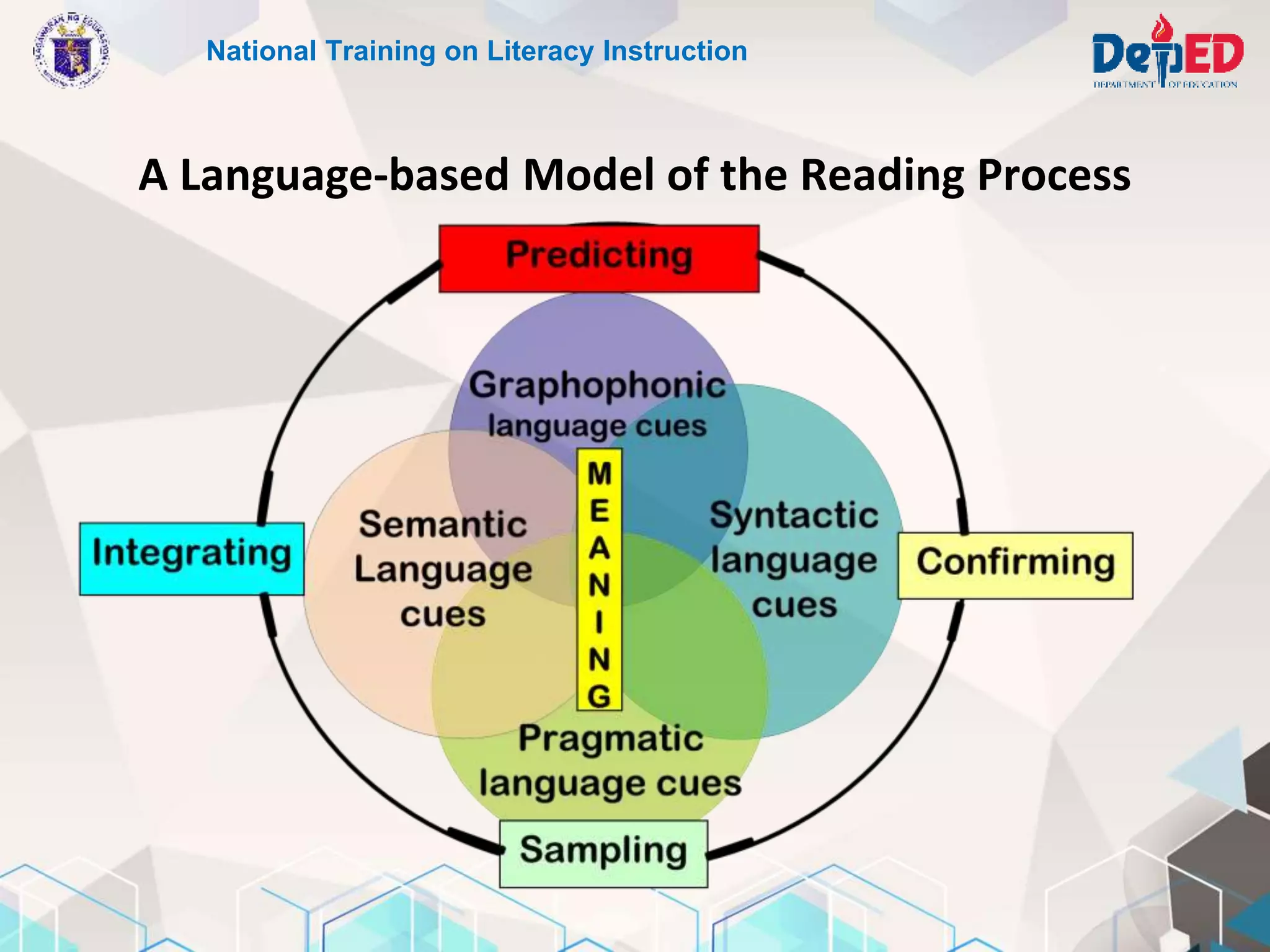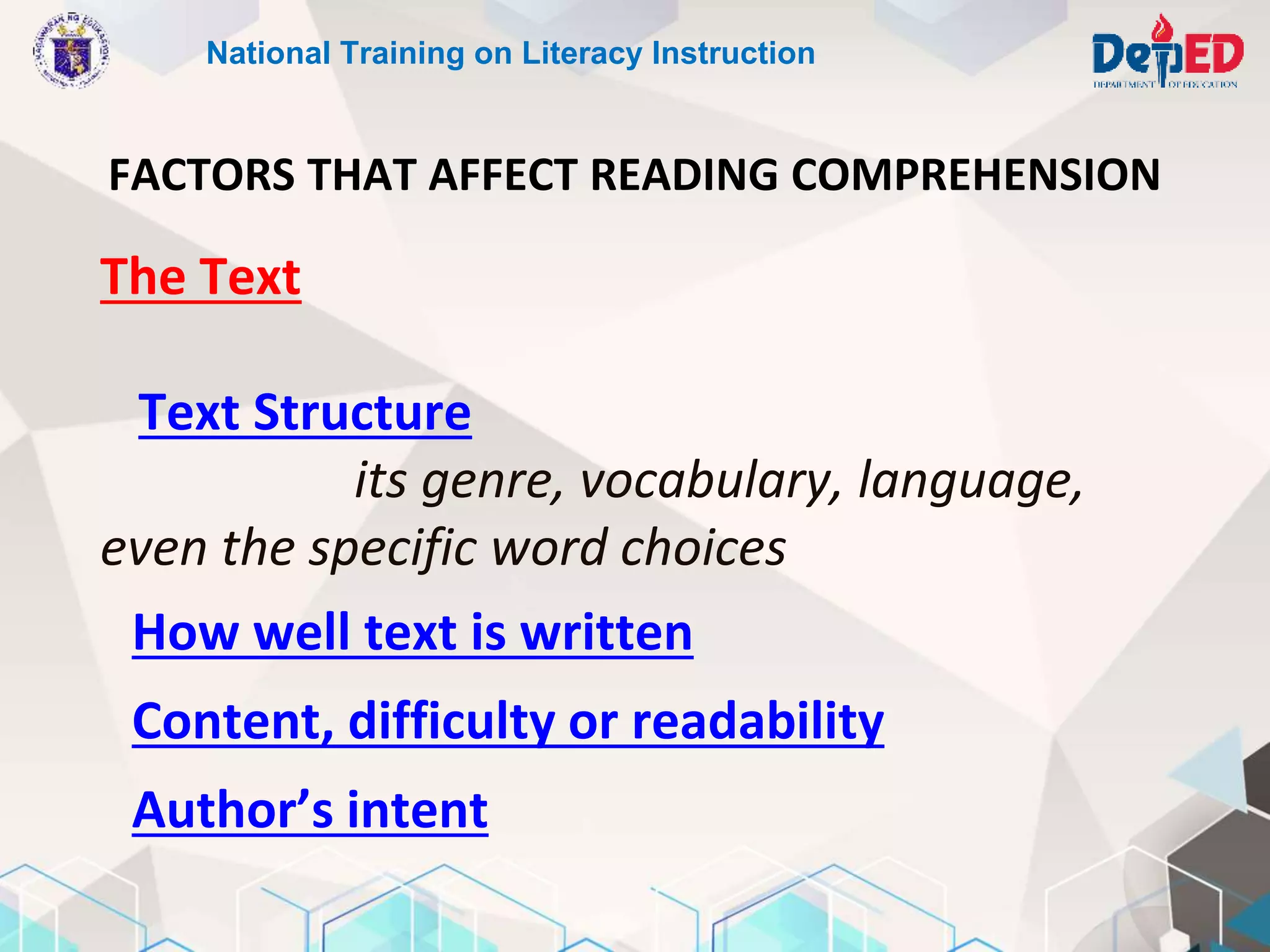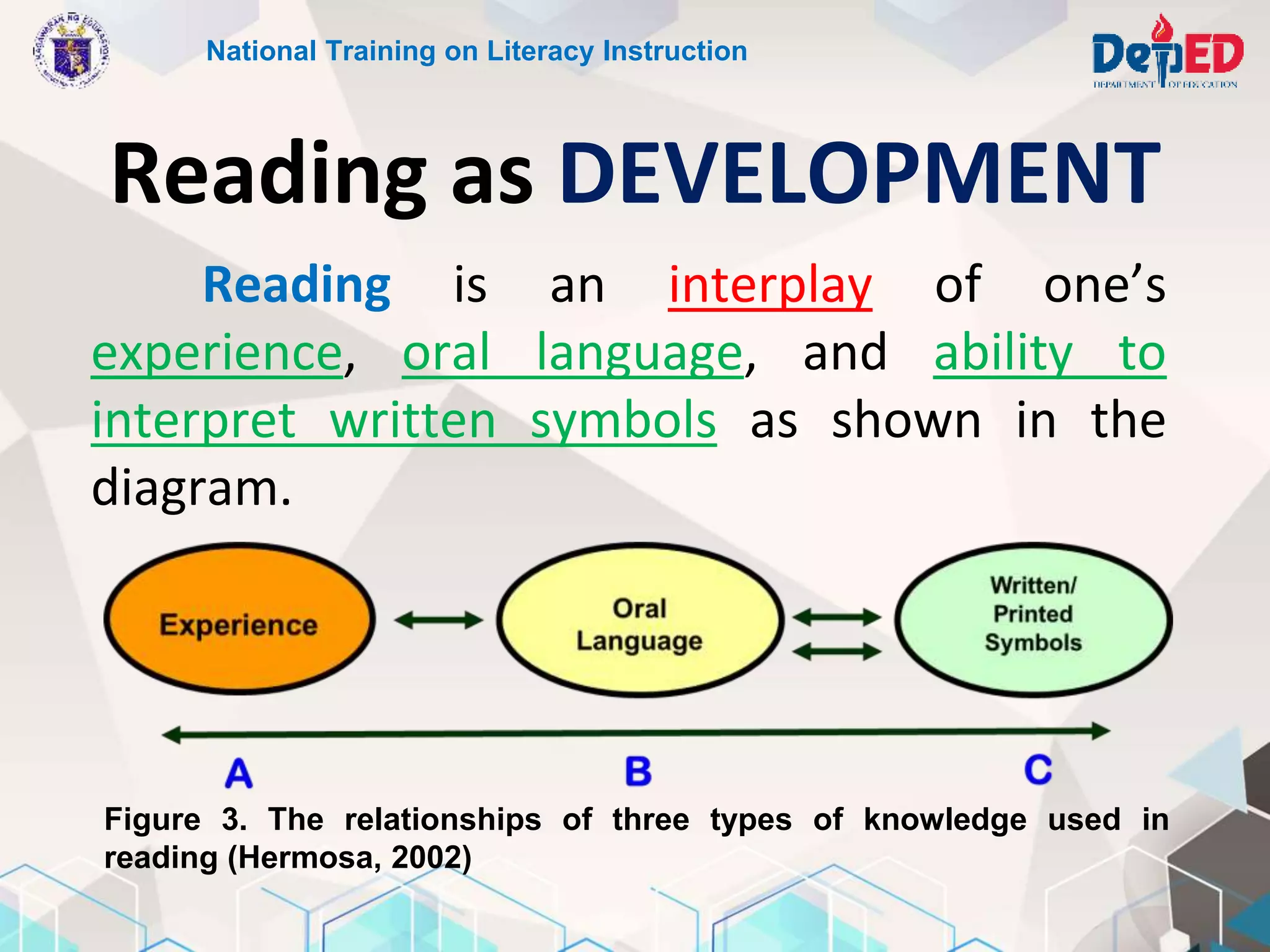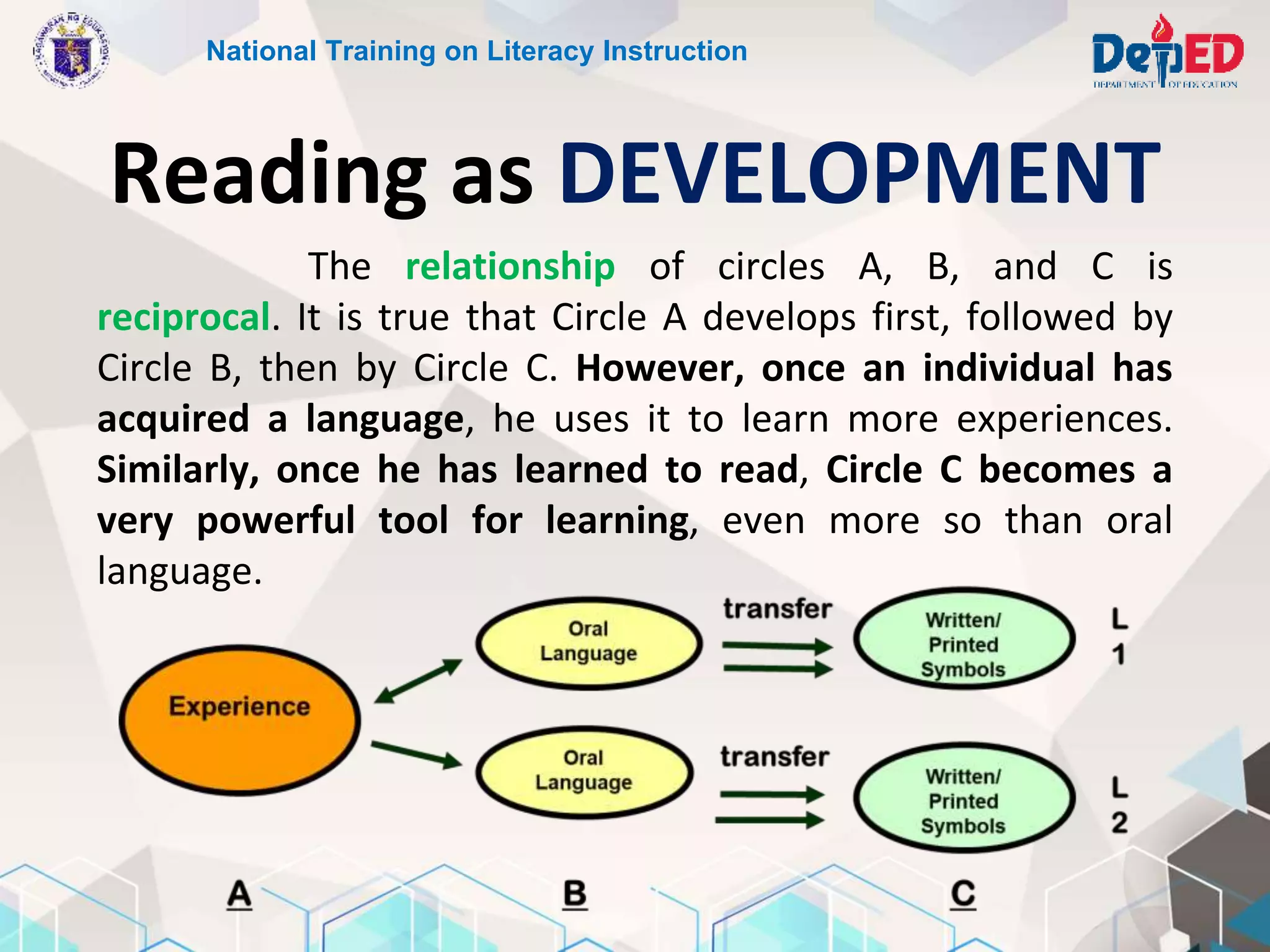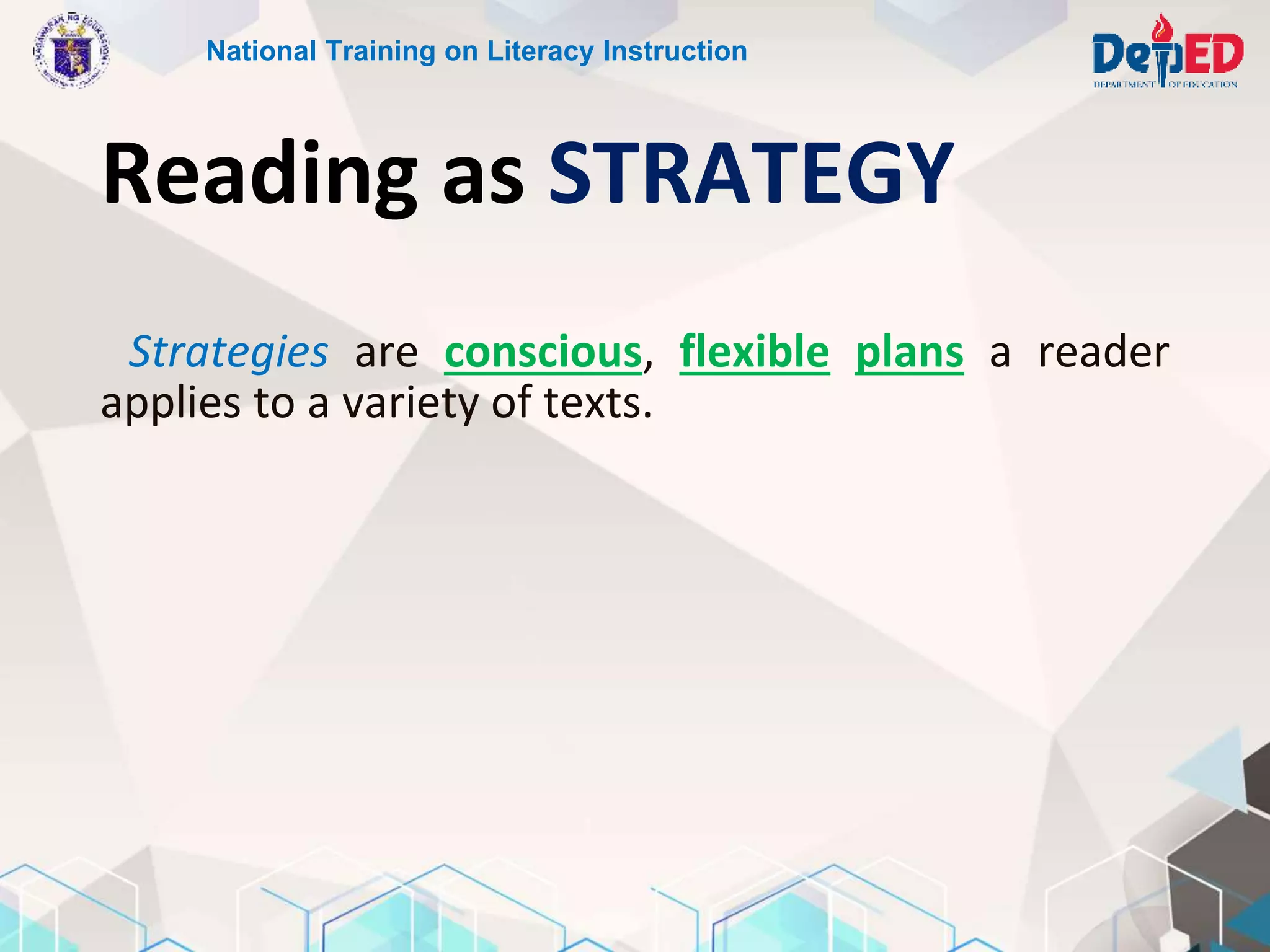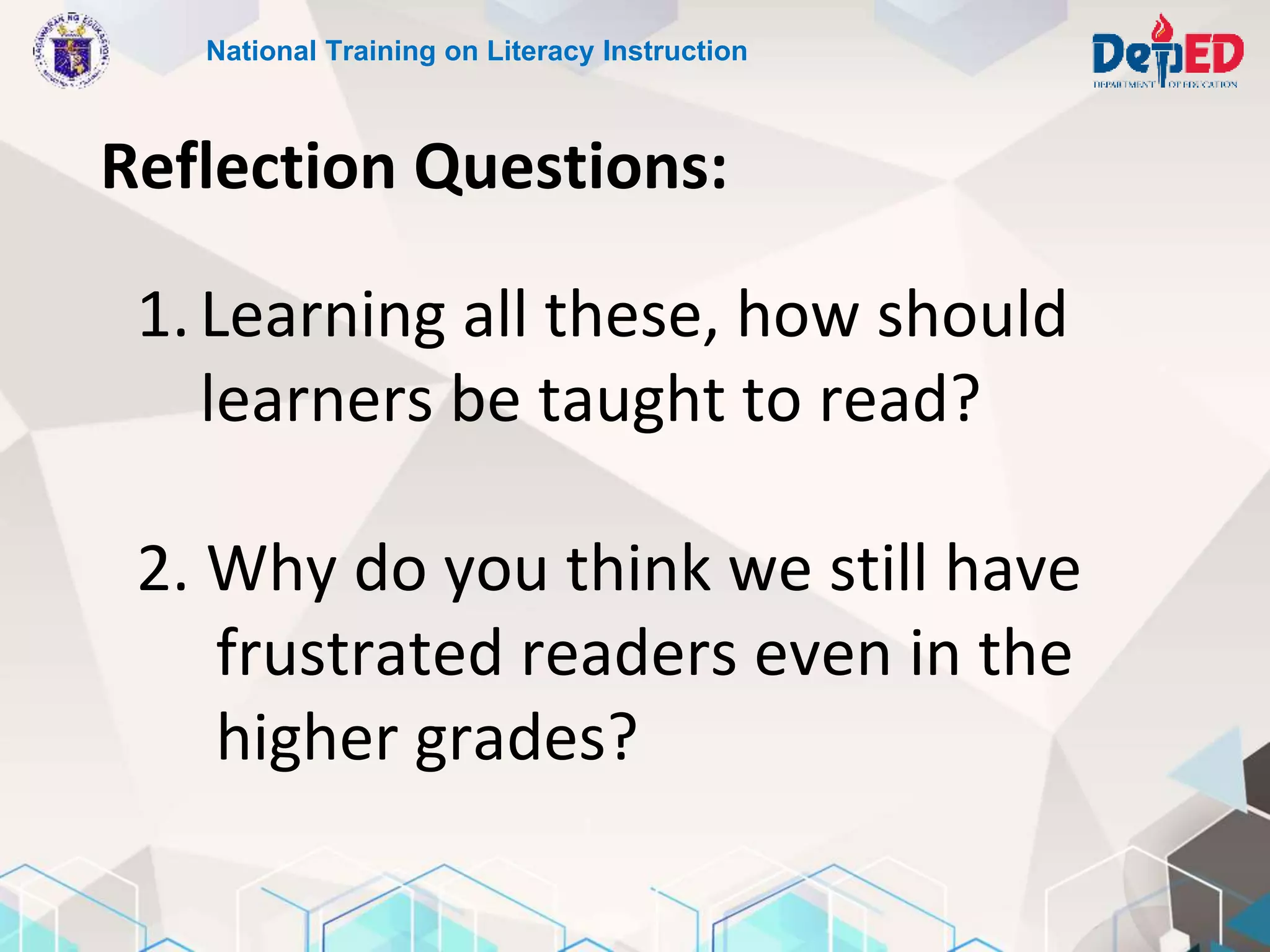This document outlines an agenda for a national training on literacy instruction. It includes the following:
1. Learning objectives focused on teaching practices that help uncover beliefs about reading, explaining the nature of reading, and applying research-based practices.
2. An activity where participants complete an anticipation guide about statements related to reading.
3. A discussion of alternative views of reading as a skill, process, comprehension, development, and use of strategies.
4. Reflection questions asking how learners should be taught to read and why some students remain frustrated readers in higher grades.


